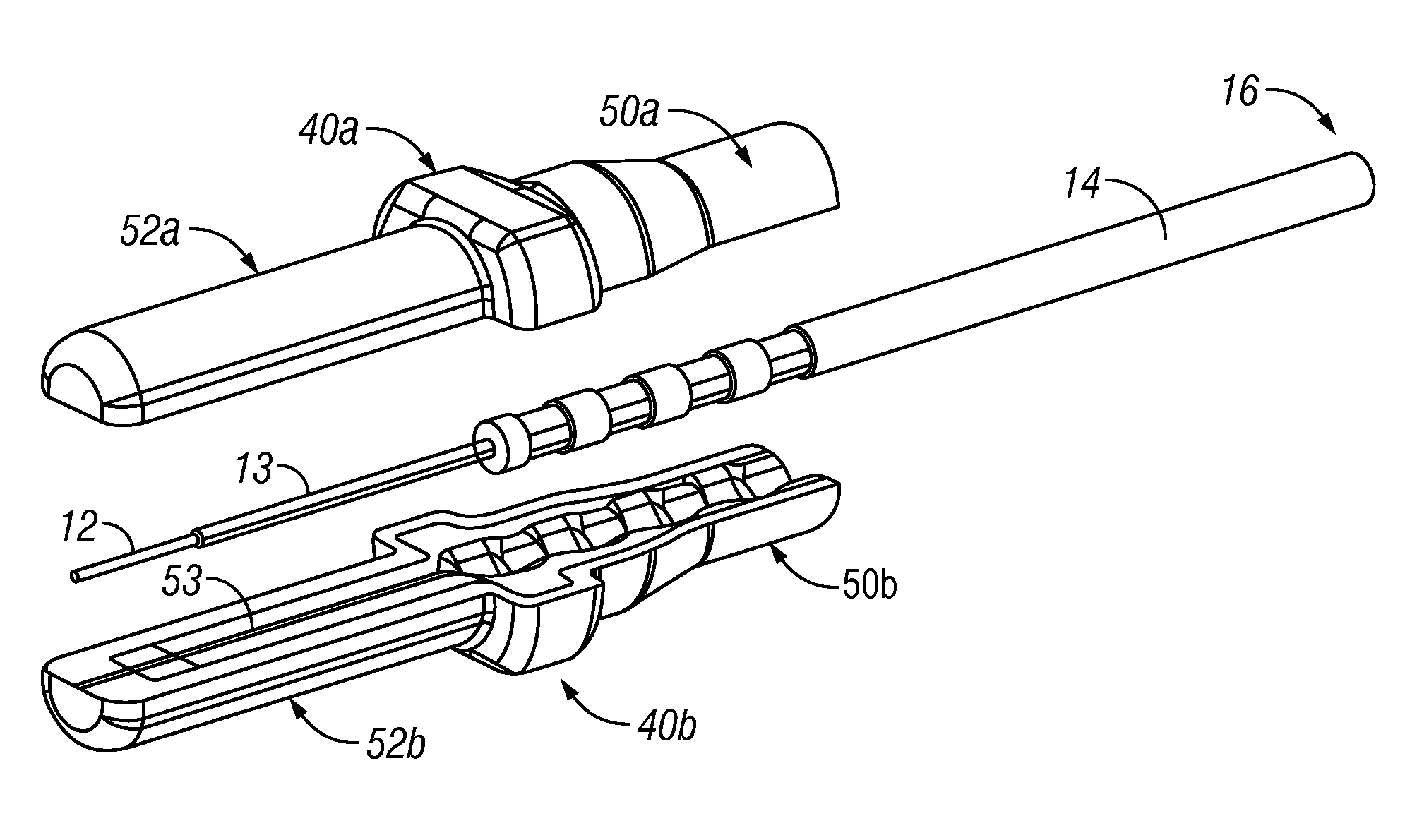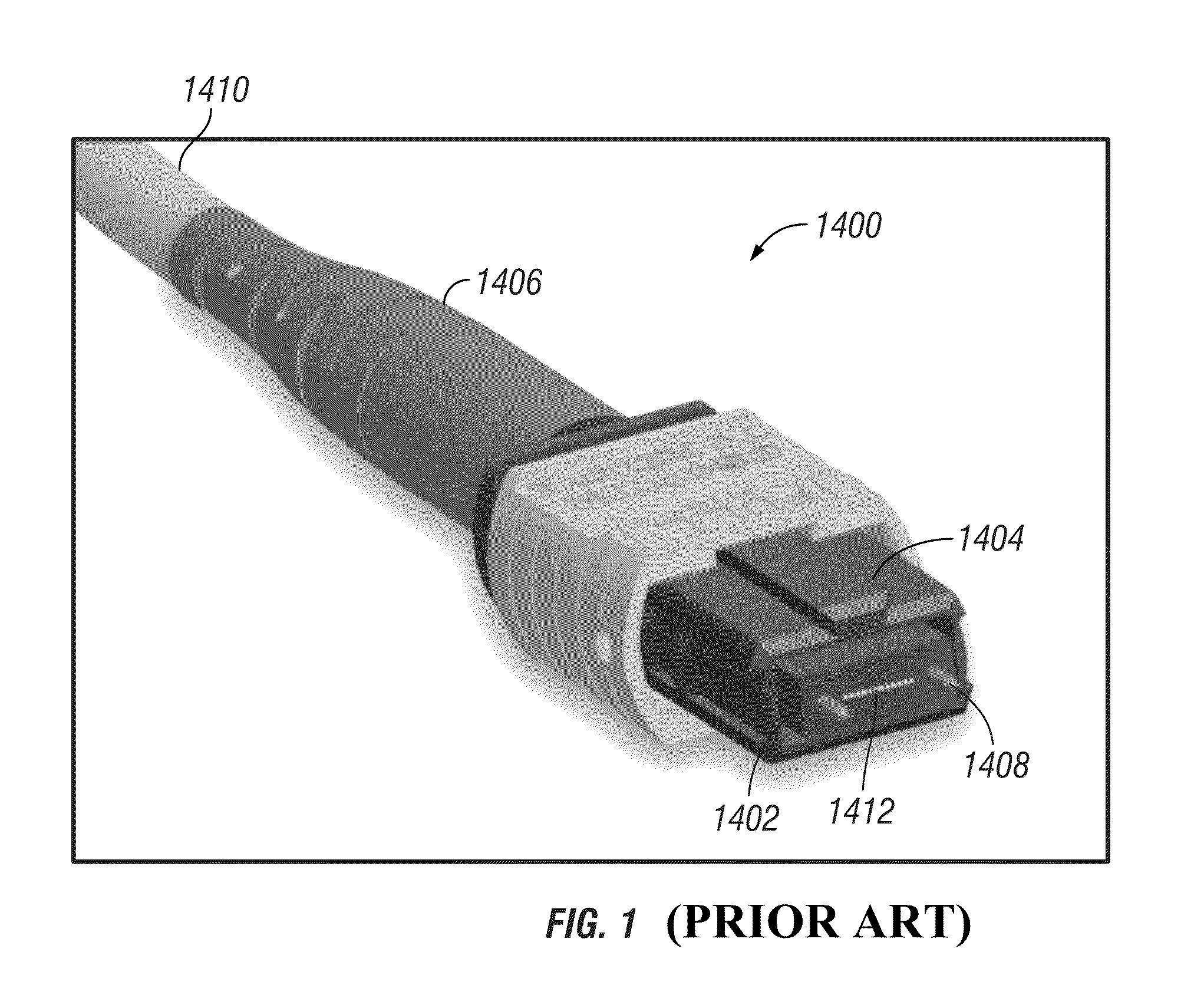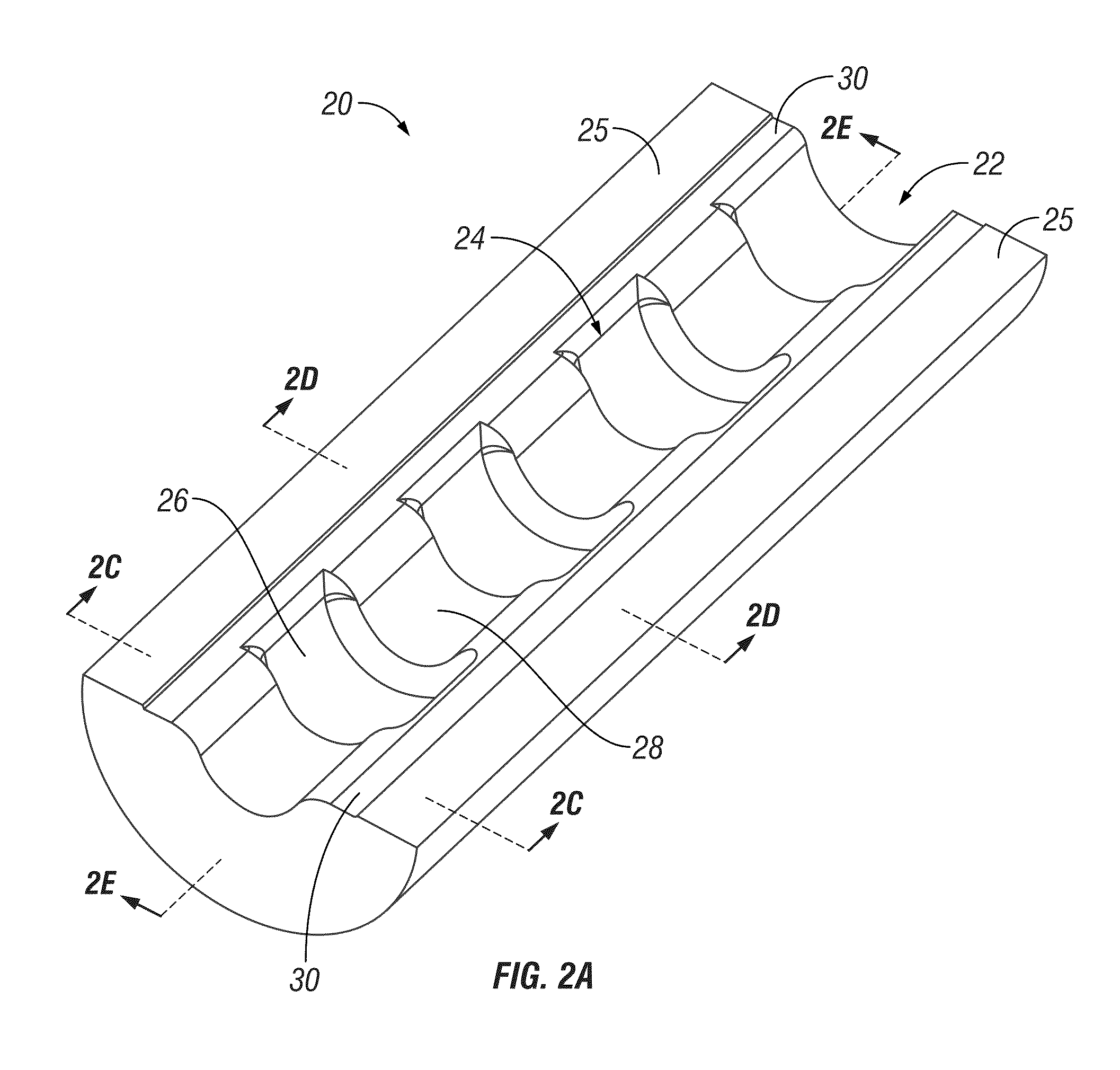Castellated optical fiber cable retention structure
a technology of optical fiber and retention structure, applied in the field of optical fiber connectors, can solve the problems of increasing connector insertion loss and reflection loss, inability to hold tolerance well, and polymerization also susceptible to creep and thermal expansion/contraction, and achieves low environmental sensitivity, high reliability, and low cost
- Summary
- Abstract
- Description
- Claims
- Application Information
AI Technical Summary
Benefits of technology
Problems solved by technology
Method used
Image
Examples
Embodiment Construction
[0031]This invention is described below in reference to various embodiments with reference to the figures. While this invention is described in terms of the best mode for achieving this invention's objectives, it will be appreciated by those skilled in the art that variations may be accomplished in view of these teachings without deviating from the spirit or scope of the invention.
[0032]The present invention provides a fiber cable retention structure (e.g., in an optical fiber connector), which overcomes many of the drawbacks of the prior art fiber cable retention structures. The fiber cable retention structure in accordance with the present invention is designed to accommodate large variations in the relatively soft exterior layer(s) of an optical fiber cable, which provides ease of use and high reliability with low environmental sensitivity, and which can be fabricated at low cost. The fiber cable retention structure comprises at least a body defining a fiber cable clamping surfac...
PUM
 Login to View More
Login to View More Abstract
Description
Claims
Application Information
 Login to View More
Login to View More - R&D
- Intellectual Property
- Life Sciences
- Materials
- Tech Scout
- Unparalleled Data Quality
- Higher Quality Content
- 60% Fewer Hallucinations
Browse by: Latest US Patents, China's latest patents, Technical Efficacy Thesaurus, Application Domain, Technology Topic, Popular Technical Reports.
© 2025 PatSnap. All rights reserved.Legal|Privacy policy|Modern Slavery Act Transparency Statement|Sitemap|About US| Contact US: help@patsnap.com



